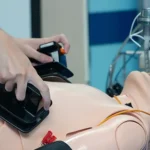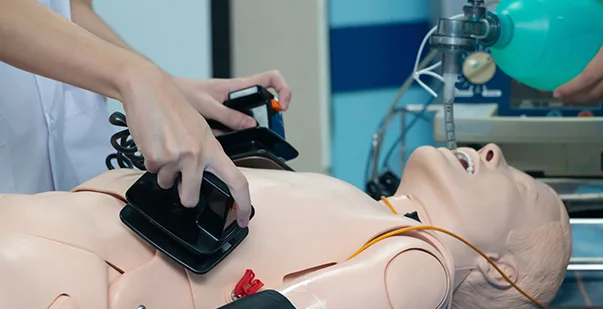In the United States, encounters with venomous snakes pose a unique set of challenges, with thousands of individuals facing snake bites annually. The country is home to various venomous species, including rattlesnakes, copperheads, and cottonmouths. According to the Centers for Disease Control and Prevention (CDC), it is estimated that around 7,000 to 8,000 people experience snake bites each year in the U.S., emphasizing the importance of preparedness and swift intervention.
First aid for snake bites is an essential component in mitigating the potential consequences of venomous encounters. Prompt and appropriate initial response can significantly reduce the severity of envenomation, preventing long-term complications and saving lives. Know more about how to manage a snake bite and the difference between poison and venom.
Read More: First Aid Courses
How dangerous are snake bites ?
The danger of a snake bite depends on various factors, including the species of snake, the location and depth of the bite, the size and health of the person bitten, and the availability of prompt medical treatment. While not all snake bites are life-threatening, some can result in severe medical emergencies.
Venomous vs. Non-venomous Snakes:
- Venomous Snakes: Bites from venomous snakes can inject toxins that may cause symptoms ranging from mild to severe. Some venomous snake bites can be fatal without timely medical intervention.
- Non-venomous Snakes: Bites from non-venomous snakes may cause pain, swelling, and infection, but they are generally less dangerous than venomous bites.
Common Symptoms of Venomous Snake Bites
Snake bites have typical symptoms and venomous bites create life-threatening situations. Some of these symptoms include:
- Localized Symptoms: Pain, swelling, redness, and bruising at the bite site.
- Systemic Symptoms: Nausea, vomiting, weakness, dizziness, difficulty breathing, and changes in heart rate.
- Sudden cardiac arrest
What is the difference between poison and venom?
| Aspect | Poison | Venom |
|---|---|---|
| Origin | Comes from substances that are harmful when ingested, inhaled, or absorbed. | Produced by certain animals for actively injecting into another organism. |
| Delivery Method | Passive exposure through ingestion, inhalation, or skin contact. | Active delivery into the bloodstream through bites, stings, or other mechanisms. |
| Examples | Toxic plants, contaminated substances, chemical compounds. | Snakes, spiders, scorpions, bees, wasps, and certain marine animals. |
This table summarizes the key differences between poison and venom based on their origin and delivery methods.
What to do in case of a snake bite?
In the case of a snake bite, immediate and appropriate actions can significantly reduce the severity of the situation. Here are the steps to follow:
- Stay Calm: Try to remain calm and encourage the victim to stay calm as well. Panicking can increase heart rate and the spread of venom.
- Move Away from the Snake: Safely move away from the snake to prevent additional bites. Keep a safe distance from the snake to avoid further encounters.
- Call for Help: Dial emergency services or seek immediate medical assistance. Time is critical, and professional medical attention is necessary.
- Keep the Bite Site Immobilized: Keep the bitten limb immobilized and at or slightly below the level of the heart. This can help slow the spread of venom through the bloodstream.
- Remove Tight Clothing and Jewelry: Remove any tight clothing or jewelry from the bitten area. Swelling may occur, and these items can become constrictive.
- Clean the Bite Area: First aid for snakebite includes gently cleaning the bite area with soap and water, but avoid using ice or a tourniquet. These measures can do more harm than good.
- Apply a Bandage: If available, apply a clean and loose bandage above the bite site to help reduce swelling. It should be snug but not tight.
- Do Not Attempt to Suck or Cut the Wound: Avoid attempting to suck out venom or cut the wound. These methods are not effective and can cause additional harm.
- Avoid Using a Tourniquet: Tourniquets can be detrimental and should not be used. They can lead to more severe complications and may not be effective in preventing venom spread.
- Monitor for Symptoms: Keep a close eye on the victim for any signs of systemic symptoms, such as difficulty breathing, dizziness, or changes in consciousness.
- Seek Professional Medical Assistance: Transport the victim to the nearest medical facility as quickly as possible. Emergency medical professionals are equipped to administer appropriate treatment for snake bites.
Read More: First aid For Injuries
Conclusion
Now that you know about first aid for snake bites, it is essential to understand the urgency of the situation. Swift application of first aid measures, such as immobilizing the affected limb, cleaning the bite site, and seeking immediate medical attention, plays a crucial role in minimizing the spread of venom and facilitating proper medical treatment. You can save people from death and help them recover faster.










